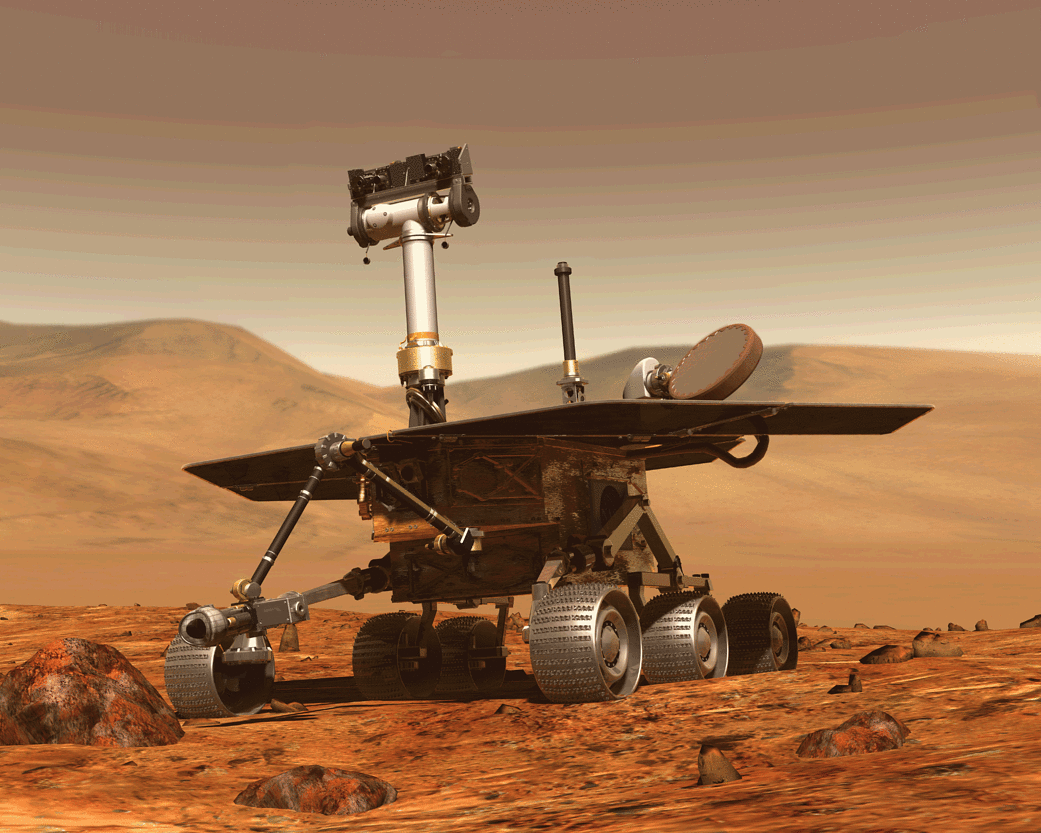

NASA has begun what is very likely its final attempt to re-establish contact with the Opportunity rover, after a massive Martian dust storm forced the agency to put the 15-year-old robot to sleep. If unsuccessful, this effort will make for a sad finale to the rover, but also cap off one of the greatest Mars missions ever conducted—propelled by technology that’s punched way above its weight.
To recap: a gargantuan dust storm swelled over the red planet last summer, effectively blotting out the sun. NASA chose to move Opportunity, a solar powered rover, into an energy-saving mode, keeping it technically on, but shutting down its scientific operations and most of its instruments. This way, the rover could run enough power to keep its heaters on and protect itself from cold temperatures that could do irreparable harm to its parts. Once the storm abated, the rover could use sunlight to recharge its batteries and come back to life once again.
It didn’t exactly work out this way. The skies cleared up, but Oppy stayed asleep. NASA hasn’t been able to communicate with the rover since June 10 of last year, and the reason isn’t totally clear. John Callas, the project manager for the Opportunity mission at NASA’s Jet Propulsion Laboratory, explained in a press release that the team planned to conduct a “sweep and beep” strategy for contacting the rover, transmitting new commands to Opportunity instead of simply putting an ear out and listening.
There are dozens of potential explanations for Opportunity’s silence. The rover’s solar panels might simply be caked in too much dust to function, or the storm might have broken something vital. Less likely, NASA suspects the primary and secondary X-band radios Opportunity uses to communicate have failed, or that the rover’s internal clock (which orients its “computer brain”) is down. The “sweep and beep” commands could help to reset some of the rover’s internal software and force it to switch to a backup X-band radio or reset the clock.
Unfortunately, the window on re-establishing contact with the rover is almost surely about to close. Here’s the thing: Opportunity has lasted long outlived its initial 90-day mission (it’s been going for 14 years) because Martian winds have periodically cleaned dust off the rover’s solar panels and allowed it to recharge. This was an unexpected boon, but it’s allowed Oppy to survive 55-times its planned lifespan.
Mars is currently in the midst of one of its windy seasons that helps clean the dust out, but that’s quickly coming to an end, and will be followed by a southern winter that’s sure to bring temperatures low enough to cause catastrophic damage to the rover’s unpowered batteries, as well as other internal circuitry. The Martian winter is what killed the Spirit Rover back in 2010.
Even if this is the end of Opportunity, there is no question the mission has been a phenomenal success. Besides the rover’s storied body of observations and scientific data, it’s been a terrific example of the sorts of planetary exploration technologies capable of lasting years and able to withstand extreme environments and climates found on other worlds. The rover’s battery and power system in particular has been a tremendous success story, inspiring the power systems developed for the Curiosity rover and the Mars 2020 rover later on.
We all hope that Opportunity can muster up the willpower to go for another 15 years, but even it’s down for the count, it will have already done more for Mars exploration than we ever anticipated.
